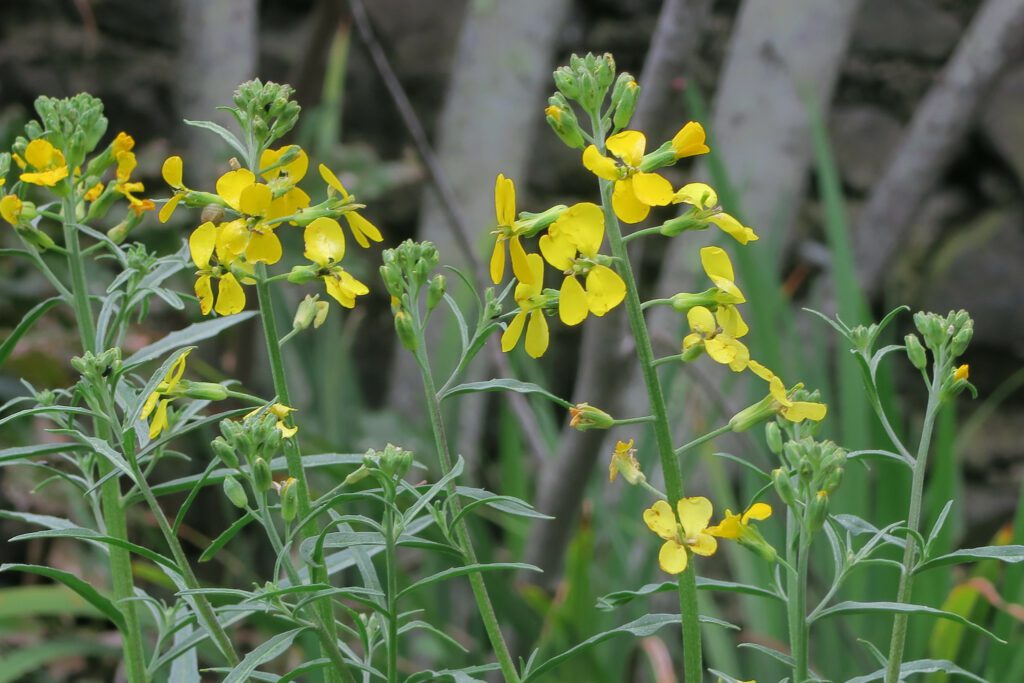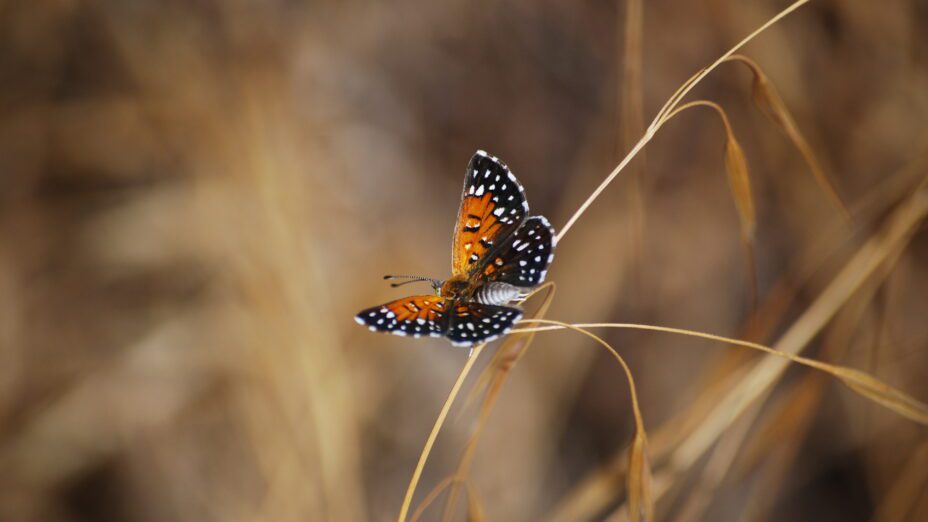
Last year, officials counted just a single male Lange’s metalmark butterfly on the eastern parcel of the Antioch Dunes. The species was extirpated from the western side after fires and other struggles.
This year, it’s likely there were none.
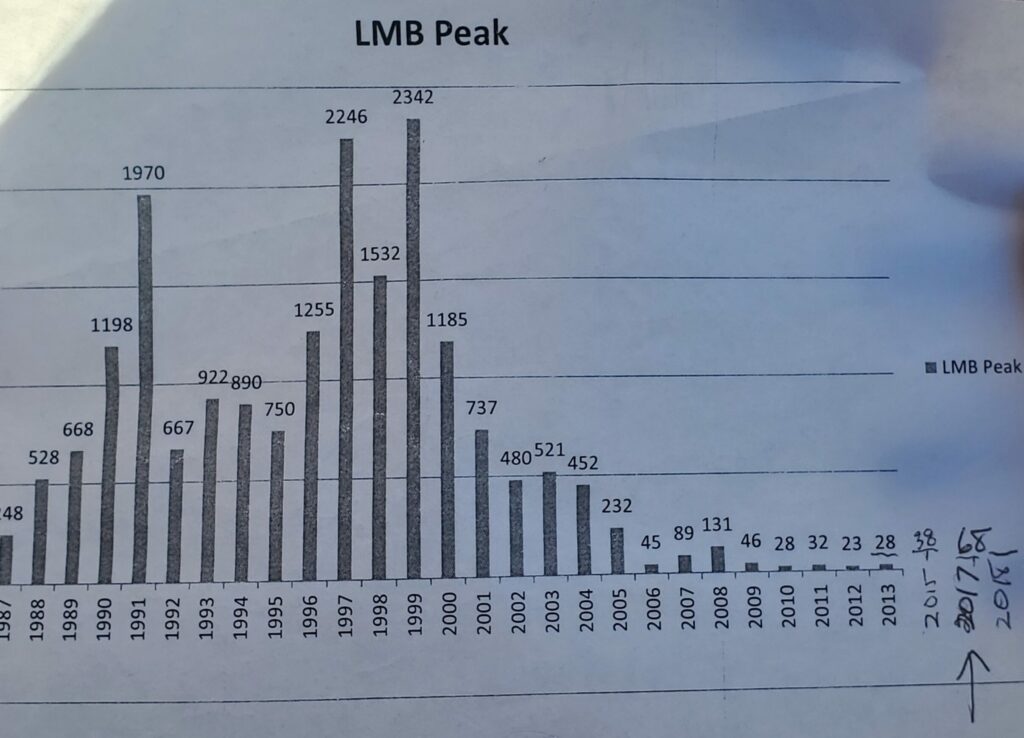
A chart showing the historical populations of the Lange’s metalmark butterfly over the years. Photo by Alexander Broom
Incredible Sand Dunes
Antioch, California is situated in the northern part of the Diablo Range where it meets the Sacramento–San Joaquin Delta.
It was once home to an incredible geographic feature: about two miles of sand dunes that stretched to nearly 120 feet high in some places along the shore.
The dunes were built up over millennia through aeolian (read wind-blown) and tidal actions from glacial sands and silt carried downriver from the Sierra Nevada.
This buildup led to a locally unique biome that, over time, meant highly adapted organisms call it home.
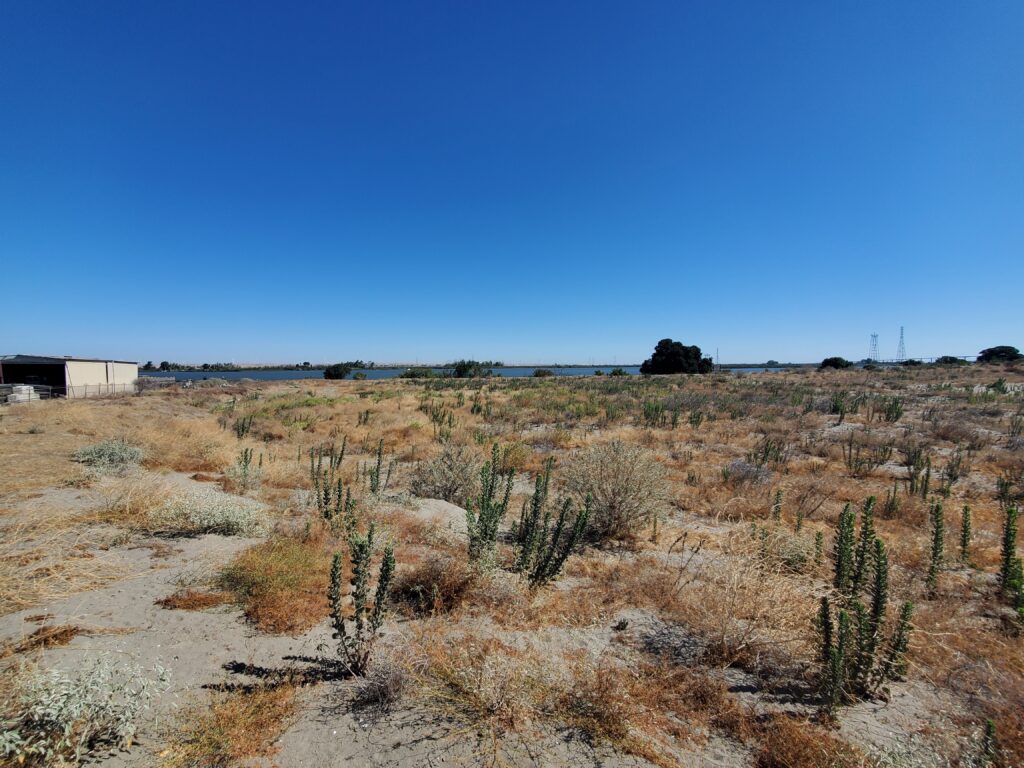
The Antioch Dunes National Wildlife Refuge once had dunes that towered high above the delta shoreline. Photo by Alexander Broom
Sand mining began at the site in the early 1900s and continued for decades, destroying much of the habitat up until the day before it was set aside and protected as a National Wildlife Refuge in 1980.
Antioch Dunes National Wildlife Refuge was the first national wildlife refuge in the country established to protect endangered plants and insects:
- the Antioch Dunes evening primrose (Oenothera deltoides ssp. howellii),
- the Contra Costa wallflower (Erysimum capitatum var. angustatum), and
- the Lange’s metalmark butterfly (Apodemia mormo langei).
According to the US Fish & Wildlife Service, the Lange’s metalmark butterfly was first discovered in 1933 and was described five years later. It’s believed the population numbered around 25,000 individuals, all about 1 to 1.5 inches across.
It’s Not Too Late for the Other Wild Creatures
Communications, advocacy, education, and policy work all come together to effect change. Those efforts give a voice to creatures like condors, salmon, wolves, bison, and so many more great conservation stories.
And though there may no longer be Lange’s metalmarks to appreciate, there is a great deal of flora and fauna still present in Antioch (and throughout the Mount Diablo region).
It’s believed there are more than 38 butterflies and moths that are still native to the site of the Antioch Dunes, according to Calscape.org.
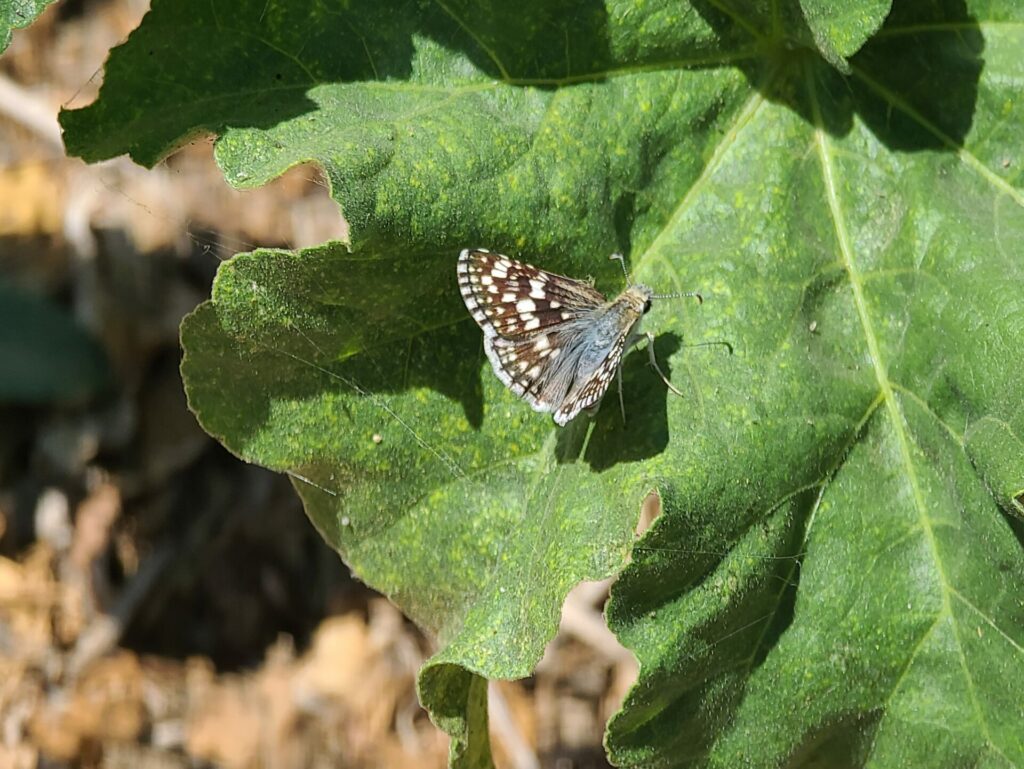
A common-checkered skipper, Burnsius communis, rests on a castor bean plant, Ricinus communis. Photo by Alexander Broom
Restoring habitat to any degree will help support them and many others that live out there.
According to iNaturalist observations, there are over 200 confirmed species on the 55-acre refuge.
There’s Still Plenty to Enjoy
Though the Antioch Dunes National Wildlife Refuge remains closed to the public for unsupervised visits, it still offers docent-led tours at 501 Fulton Shipyard Road in Antioch every second Saturday at 10 AM, if there’s no adverse weather.
Depending on the time of year, you could see the protected Contra Costa wallflower, Antioch Dunes evening primrose, or the Antioch Dunes buckwheat flowering, along with a great number of other cool plants.
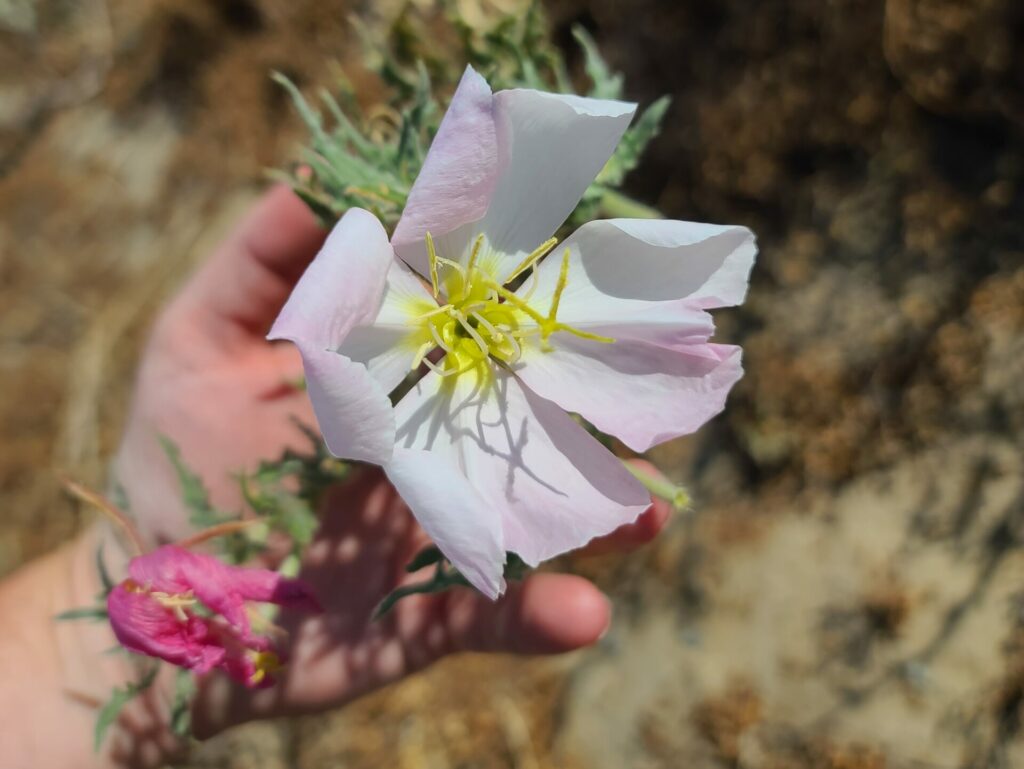
An Antioch Dunes evening primrose blooms late in its season. Photo by Alexander Broom
Likewise, there are plenty of other interesting insects and butterflies around in the area from spring to fall.
Like the Lange’s metalmark, some of those insects rely on the naked-stem buckwheat (Eriogonum nudum var. auriculatum) present at the refuge as a host plant.

Antioch Dunes naked-stemmed buckwheat in full bloom during August provide nectar when many other plants cannot. Photo by Alexander Broom
And many other pollinators can appreciate its plentiful, nectar-filled flowers as a source of late-summer sustenance.
What We Can All Do to Help
The story of the Lange’s metalmark butterfly highlights how important the work that land trusts and conservation programs do.
Protecting and restoring habitat is done on a large scale by these organizations, and they require a good deal of financial and human resources.
If you can donate your time by volunteering or money to a local land trust, you’ll help protect wild lands and open spaces from destruction or rehabilitate what’s left.
Also: the most cultivated “crop” in the US today isn’t wheat, corn, or soy. It’s lawns.
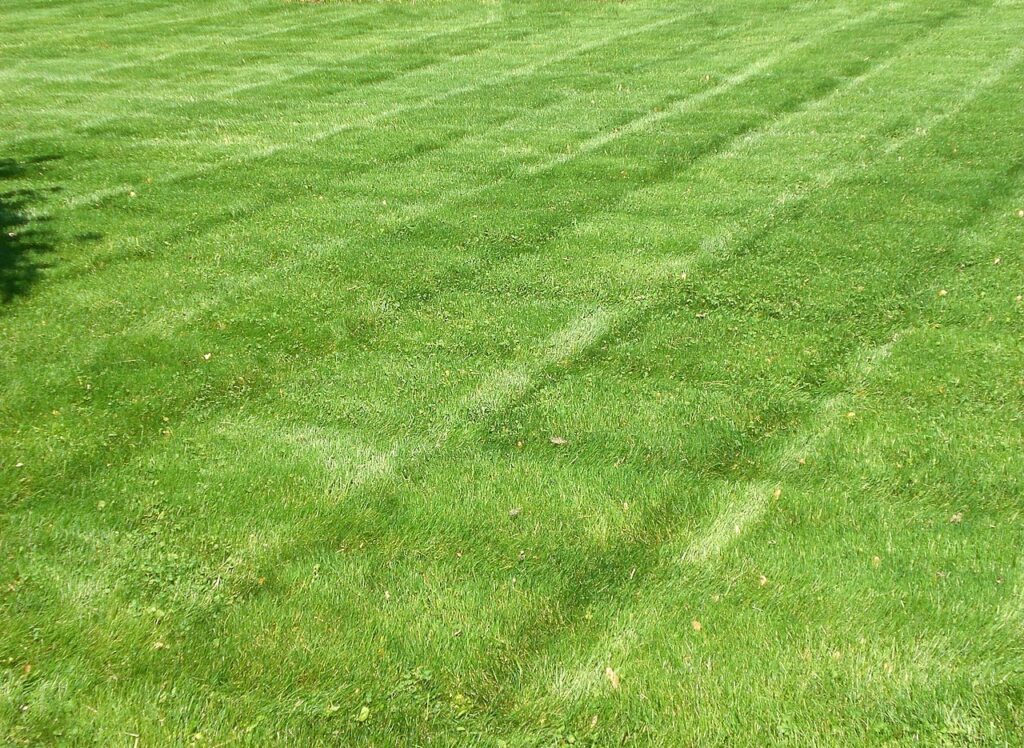
Lawns are the most cultivated crop in the United States and contribute nothing to food supplies while inhibiting natural biodiversity. Photo by Paul Frederickson | CC BY-SA
Lawns do next to nothing to provide habitat for wildlife. Reintroducing native plants that are also keystone species to your home or in your garden can have monumental impacts at scale.
How is that? Keystone plants, like those found on this great list by our friends from Bringing Back the Natives, can help restore a missing link in a food chain or web by providing food for wildlife.
They also provide shelter, improve soil, and so much more.

An example of a small California native plant garden with keystone plants that are providing nectar for pollinators. Photo by Jeff Silva, CNPS | CC-BY
Planting native keystone species in your front or back yard or in containers can make a huge difference for butterflies, native bees, other pollinators, and birds!
